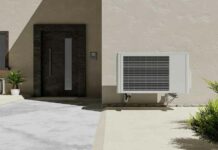HVAC workers labor in harsh circumstances that need durable gear. These laborers endure dangerous conditions and shifting temperatures daily. The HVAC sector has prioritized developing their uniforms from basic work wear to high-performance attire that addresses the particular difficulties of the HVAC work environment.
Modern HVAC professionals wear durable, flexible, and comfortable uniforms. Safety measures guard against electrical dangers and severe heat on-site. These solutions improve HVAC personnel’ comfort and safety, allowing them to operate better. This article discusses the newest HVAC standard materials and technology that improve comfort and safety for professionals.
Safety and Comfort in HVAC Work
HVAC workers confront severe circumstances and complicated activities, therefore comfort and safety are crucial. HVAC workers spend long hours in cramped, unpleasant rooms or severe outside temperatures, so comfort is important. The task includes regular bending, lifting, and climbing.
Breathable, temperature-regulating uniforms may avoid overheating in summer and provide insulation in winter. Durable and flexible uniforms avoid overexertion and repetitive motion injuries, protecting workers’ long-term health. This flexibility lets specialists concentrate on their task rather than their surroundings.
Because HVAC professionals work in dangerous areas with electrical dangers, chemicals, refrigerants, and gases, safety is essential. Safety-focused uniforms with fire-resistant fabrics and extra padding help prevent burns, cuts, and other injuries. High-visibility choices reduce accidents by making workers visible in poor light.
Key HVAC Uniform Performance Enhancers
Some of the materials changing HVAC workwear:
HVAC uniforms use moisture-wicking textiles to keep technicians dry and comfortable. These textiles pull perspiration to the outside of the clothes, where it may drain rapidly, preserving body temperature and decreasing discomfort.
HVAC uniforms use ripstop nylon to prevent tears and abrasions from sharp items and rough surfaces. This material prolongs uniform life and protects wearers.
- Thermo-regulated textiles: Materials that adjust to temperature fluctuations assist maintain body temperature. With its cooling and insulating properties, they provide year-round comfort.
- Antimicrobial treatments: HVAC uniforms are treated to avoid germs and smells. This is crucial for maintaining cleanliness and freshness throughout extended workdays.
- Flame-resistant materials: Handy for electrical risks. Fire-resistant materials prevent abrupt hot flashes and direct flames.
- Reflective materials: Uniforms with them boost low-light visibility. Safety is paramount for professionals operating in poorly light or nighttime conditions.
- Spandex blends: For mobility, spandex is commonly combined with other textiles. Technicians that work in confined locations or do difficult movements need this upgrade for more range of motion.
Innovative Tech
Innovative HVAC Uniform Technologies Improve Safety and Comfort
The following technologies help HVAC personnel operate more efficiently and safely:
Smart Fabrics
Smart textiles use sensors to change uniform characteristics to environmental circumstances. This might involve increasing fabric permeability to enhance breathability or activating heat components during rapid temperature reductions.
Enhanced Cushioning
Impact and fall injuries are prevented by strategically placed cushioning. Lightweight cushioning allows safe and comfortable movement in small areas.
UV defense
UV-protective textiles protect outdoor technicians against sunburn and skin injury. This technology is essential for long-term outdoor skin health.
Anti-Static Features
In combustible and electrically charged situations, static electricity may be dangerous. HVAC uniforms with anti-static technology reduce sparks and improve safety in explosive environments.
Stretch Tech
To make uniforms move freely, HVAC fabric manufacturers utilize stretch technology. This improves flexibility and movement for HVAC workers who must operate in small places or in different positions.
Possible HVAC Uniform Trends
Some expected trends might change HVAC workwear:
Smart textiles: Sensors and wearable technology will become increasingly common, delivering real-time environmental and health data. Monitoring temperature, heart rate, and other vital signs helps avoid heat exhaustion and other health complications.
Future uniforms may include IoT connections to monitor vital indicators or technician environments. This technology may notify users of harmful circumstances or health parameters that exceed safe thresholds.
Durability: New materials and manufacturing methods may make HVAC uniforms more resistant to rips, abrasions, and harsh circumstances.
HVAC Innovation
Moving toward Comfortable and Safe HVAC Innovation
Given technicians’ harsh working conditions, HVAC uniforms must be comfortable and safe. Recent material and technology breakthroughs address these crucial issues, improving HVAC workers’ everyday work life. Even with advancements, there is always space for improvement.
IoT connection, smart fabrics, and eco-friendly materials might improve HVAC workwear, supporting technicians’ health and efficiency. This forward-thinking strategy guarantees that HVAC workers’ clothing keeps up with industry innovations.




























